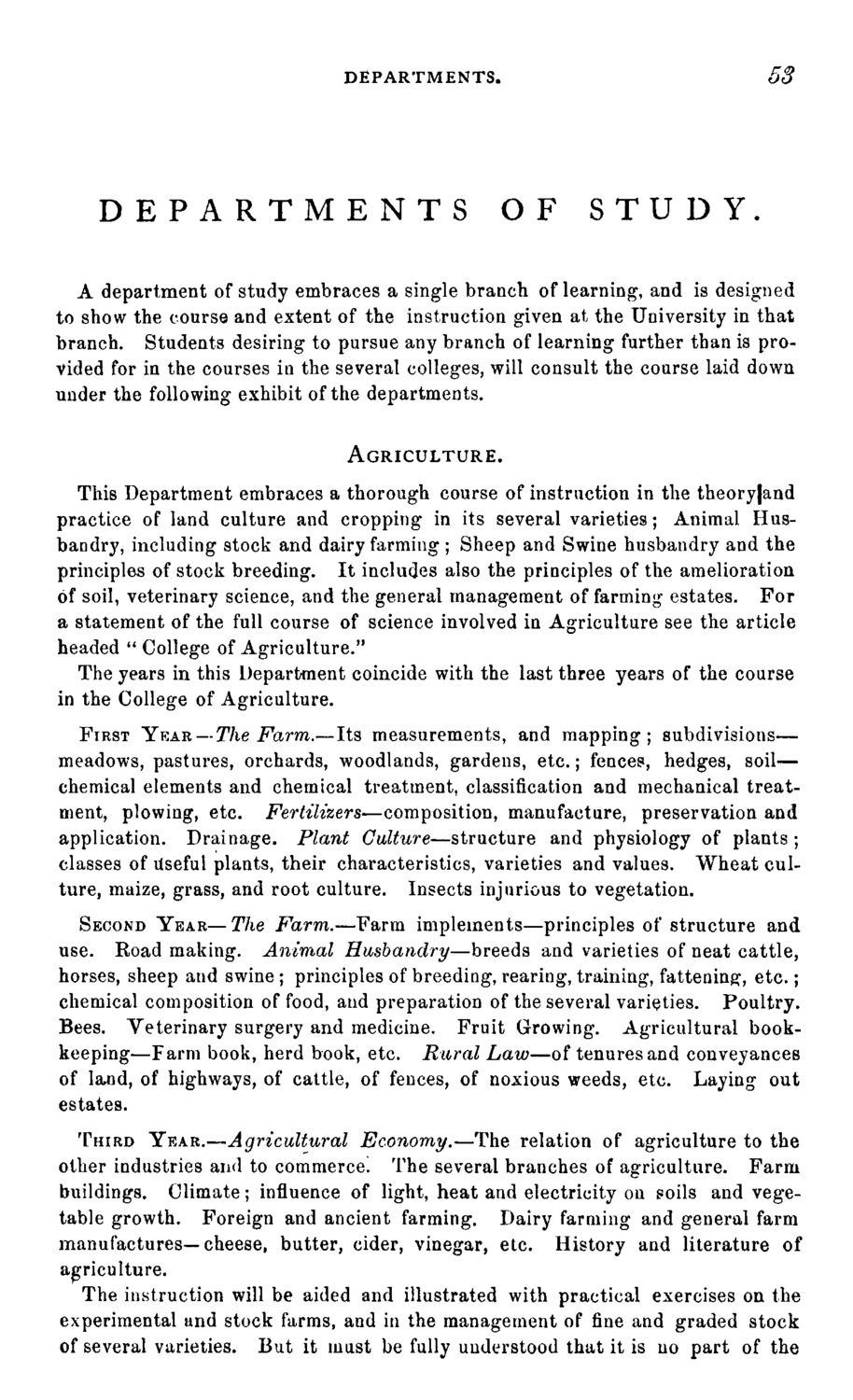| |
| |
Caption: Course Catalog - 1871-1872
This is a reduced-resolution page image for fast online browsing.

EXTRACTED TEXT FROM PAGE:
DEPARTMENTS. 53 D E P A R T M E N T S OF STUDY. A department of study embraces a single branch of learning, and is designed to show the course and extent of the instruction given at the University in that branch. Students desiring to pursue any branch of learning further than is provided for in the courses in the several colleges, will consult the course laid down under the following exhibit of the departments. AGRICULTURE. This Department embraces a thorough course of instruction in the theory|and practice of land culture and cropping in its several varieties; Animal Husbandry, including stock and dairy farming ; Sheep and Swine husbandry and the principles of stock breeding. It includes also the principles of the amelioration of soil, veterinary science, and the general management of farming estates. For a statement of the full course of science involved in Agriculture see the article headed " College of Agriculture." The years in this Department coincide with the last three years of the course in the College of Agriculture. FIRST YEAR — The Farm.— Its measurements, and mapping; subdivisions— meadows, pastures, orchards, woodlands, gardens, etc.; fences, hedges, soil— chemical elements and chemical treatment, classification and mechanical treatment, plowing, etc. Fertilizers—composition, manufacture, preservation and application. Drainage. Plant Culture—structure and physiology of plants ; classes of Useful plants, their characteristics, varieties and values. Wheat culture, maize, grass, and root culture. Insects injurious to vegetation. SECOND YEAR—The Farm.—Farm implements—principles of structure and. use. Road making. Animal Husbandry—breeds and varieties of neat cattle, horses, sheep and swine ; principles of breeding, rearing, training, fattening, etc.; chemical composition of food, and preparation of the several varieties. Poultry. Bees. Veterinary surgery and medicine. Fruit Growing. Agricultural bookkeeping—Farm book, herd book, etc. Rural Law—of tenures and conveyances of lafld, of highways, of cattle, of fences, of noxious weeds, etc. Laying out estates. THIRD YEAR.—Agricultural Economy.—The relation of agriculture to the other industries and to commerce. The several branches of agriculture. Farm buildings. Climate; influence of light, heat and electricity on soils and vegetable growth. Foreign and ancient farming. Dairy farming and general farm manufactures—cheese, butter, cider, vinegar, etc. History and literature of agriculture. The instruction will be aided and illustrated with practical exercises on the experimental and stock farms, and in the management of fine and graded stock of several varieties. But it must be fully understood that it is no part of the
| |